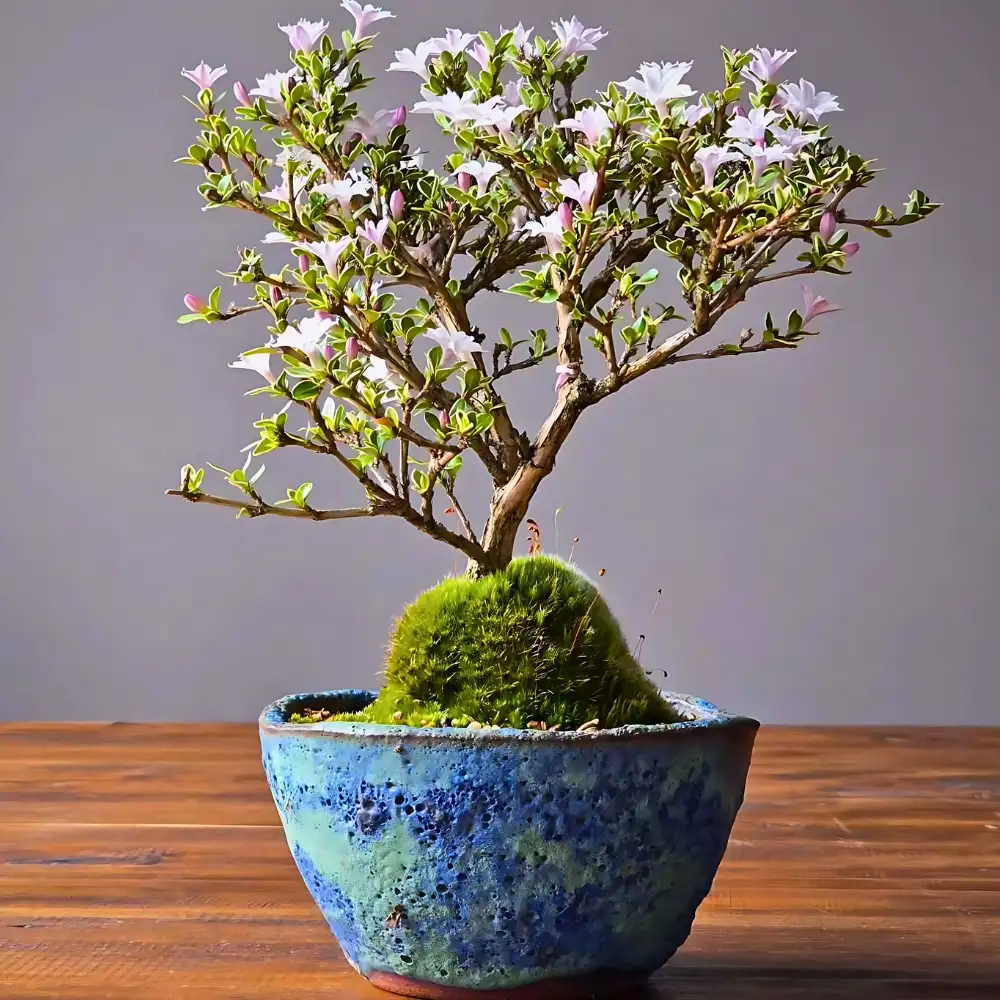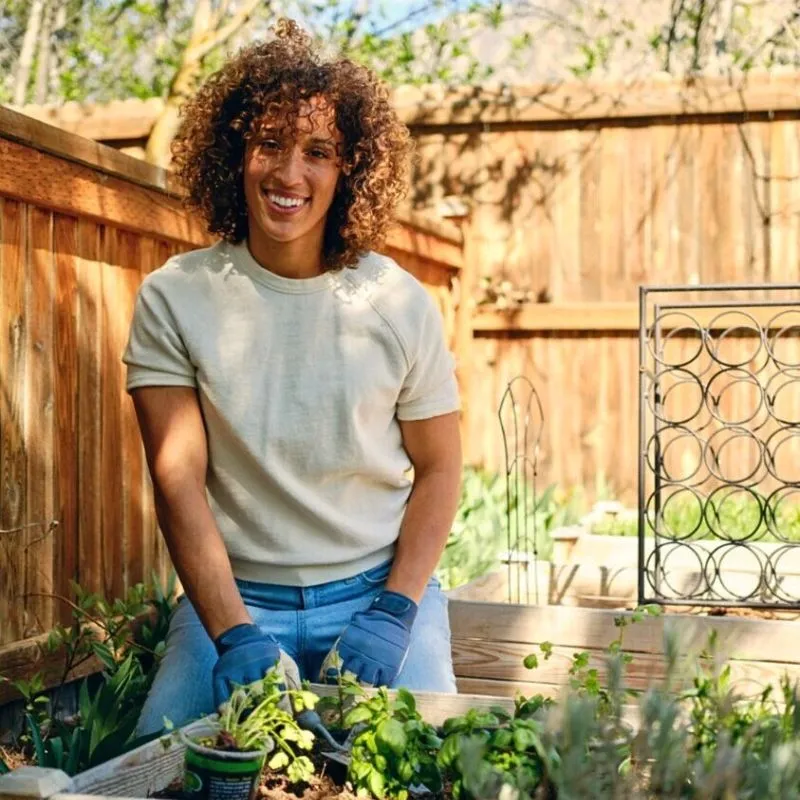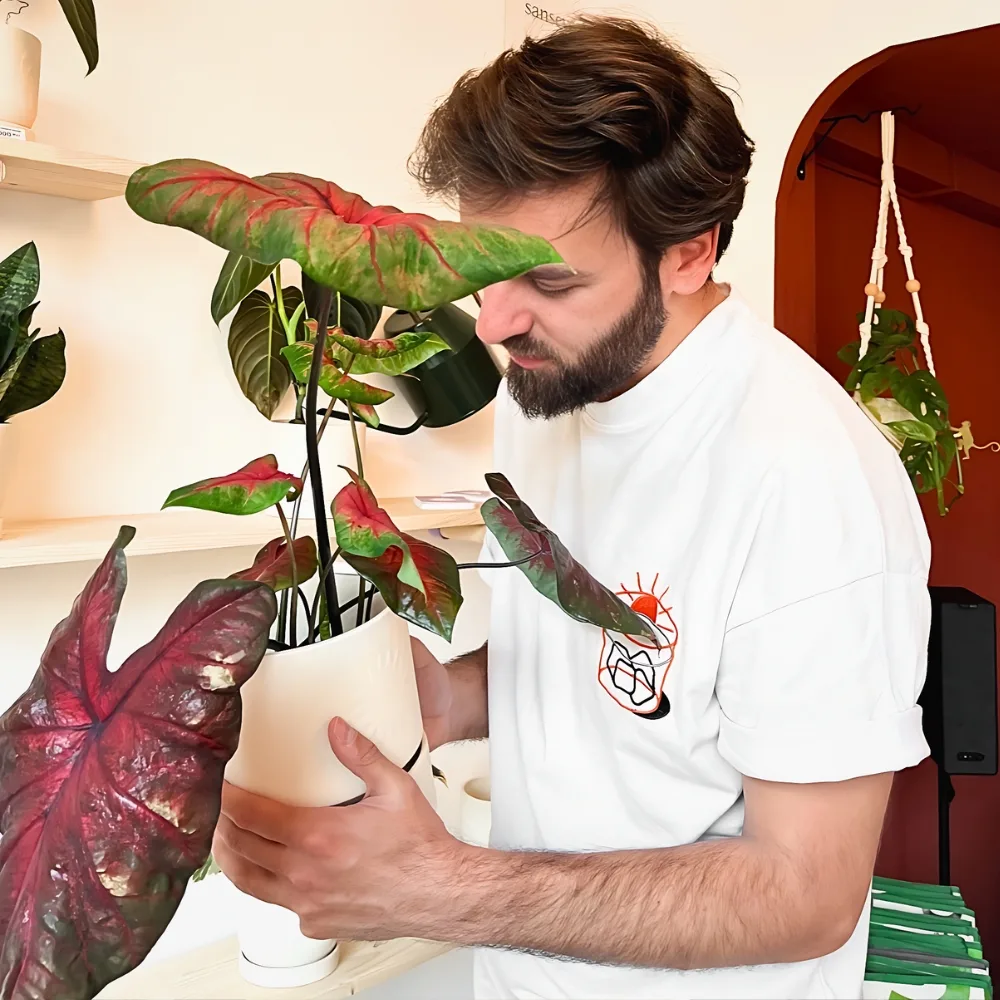There is a growth in the popularity of interior plants. And this is no passing trend or just a fad; it is a movement with multiple health and environmental benefits. These benefits not only improve the well-being of humans but also contribute to a much healthier planet. Simply put, bringing plants into indoor spaces or interiors offers a simple yet effective way to bridge the gap, providing a connection between humans and nature. This, in turn, benefits both people and the planet.
From reducing stress and boosting mood to improving air quality and doing a lot more, houseplants and interior and indoor plants have far-reaching, positive impacts on people’s lives and… yes, of course, the earth too! Far from being just decorative elements, these plants offer a myriad of benefits for both an individual's well-being and the health of the planet. They are, in fact, the silent guardians, contributing to a more habitable space and a sustainably healthy lifestyle.
An important role in this story is for the plant label that has made its mission to market air-purifying plants. Its name? Air So Pure!
A Dose of the ‘Nature Pill’ Through Health and Restorative Benefits of (Interior) Plants
Plants, in general, have been proven to have a soothing and uplifting effect on individuals. Multiple research studies have shown the positive impact of interior plants on human health. You could talk of lowering stress levels, boosting productivity and concentration in work and office environments, purifying indoor air—thus preventing certain health conditions—or reducing energy consumption at home while conserving biodiversity. Still, plants remain the actual guardians of the planet.

One of the most well-documented benefits of interior plants is their ability to purify the air in indoor spaces. Modern homes and workspaces are often compactly closed up, thus trapping contaminants. From furniture, electronics, and cleaning products, these pollutants cause a range of health issues, like headaches and fatigue, to more serious respiratory problems. Air So Pure has built an assortment that contains the top purifiers of the planty world.
However, plants are, to a great extent, natural air purifiers. They can absorb harmful compounds, like formaldehyde, benzene, and trichloroethylene, and release fresh, oxygen-rich air in return, enhancing the freshness of the air in the room. This makes interior plants an invaluable asset for those with conditions like allergies, asthma, or other respiratory disorders. Just for your info, here are 15 air-purifying plants that will give your home a breath of fresh air.

Indoor plants are also a stress reliever. A study conducted and published in the Journal of Physiological Anthropology found that plants in indoor spaces can alleviate stress and make people feel more comfortable and settled. Those who took part in the study experienced a reduction in stress levels and lower blood pressure after interacting with plants. This calming effect was further supported by another study that measured participants' stress hormone cortisol levels. The research found that being in nature and around plants reduces this stress hormone, thus lowering the levels of stress.
Plants can also have a positive impact on people’s cognitive abilities. Several studies have shown that students in classrooms with potted plants performed better in subjects including math, spelling, reading, and science tests than those without any greenery around them. Elementary school students who studied in a classroom with real plants also improved their cognition, attention, and concentration, as brain scans revealed afterward. Visible greenery, therefore, has a restorative effect on human minds, enhancing the ability to focus.

The therapeutic benefits of plants are also supported by several other studies. Horticultural therapy has, for instance, been used to help patients with mental illnesses such as depression, anxiety, and dementia. Some medical clinics have even begun ‘prescribing’ plants to patients with depression or anxiety. Such include Cornbrook Medical Practice in Manchester, England. Here, learning to nurture a living plant is believed to help lower anxiety, improve attention, and alleviate the symptoms of depression, while working with these plants can be an effective hobby that relieves stress and promotes mental relaxation.
Apart from being effective for psychological well-being, interior plants also aid in the recovery of patients undergoing illness or surgery. Research reviews have shown that hospitalized patients exposed to plants— sometimes through a view of nature—in their rooms had calmer states of mind, reduced pain, and shorter stays in the hospital. Flowers, in particular, have a cheering effect and can enhance the surroundings and the outlook of those around them.

Interior Plants and Their Environmental Impact
More than having a positive impact on human health, interior plants also contribute to a healthier planet. Pollution levels, as is known, are often higher indoors than they are outdoors. Indoor air is often a mix of outdoor-derived compounds and indoor-generated contaminants. It is, likewise, common knowledge that the volatile organic compounds (VOCs) emitted from everyday objects could have adverse health effects on humans.
However, interior plants can soak up these VOCs and clean the air naturally. Think of plants like the standing plants Spathiphyllum, Ficus lyrata, and Monstera deliciosa, or the hanging Hedera helix. Air So Pure has many other species on offer, all with the same purpose, besides being great-looking: they have the potential to reduce these harmful indoor pollutants. In fact, they have especially selected over twenty of the best air purifiers in the world. So, when you buy one, you can rest assured it will do its job properly.
But then again, different plants vary in their ability to eliminate these chemical compounds. The NASA Clean Air Study, done in 1989, demonstrated just how houseplants, along with their microorganisms, remove VOCs from indoor air. Through photosynthesis, they absorb carbon dioxide and release oxygen, thus improving air quality.

Still, more can be said of interior plants. They can increase humidity in the home, which can be particularly beneficial during the dry winter months, when heaters and air conditioners often reduce the humidity indoors. This makes inhabitants more susceptible to conditions like colds and flu. Houseplants, on the other hand, can release moisture into the air and create a more comfortable environment.
These benefits extend to carbon dioxide absorption. While the impact of indoor plants on carbon dioxide levels may be modest compared to outdoor vegetation, they still contribute to reducing it in enclosed spaces, which not only improves air quality but also aligns with global efforts to mitigate climate change. Still, this is linked to their capability to reduce energy consumption. Strategically placed, these interior plants also help regulate indoor temperatures. They potentially cut the need for artificial heating and cooling, which means a reduced reliance on energy-intensive heating and cooling systems. The result is lower energy consumption and, thus, a minimal carbon footprint.

Interior plants can, by the same token, still be part of a broader sustainability strategy. Growing herbs or small vegetables indoors can reduce packaging waste associated with store-bought produce, which in turn promotes a greater connection to nature, potentially increasing environmental awareness and encouraging more sustainable behavior in other aspects of life. Not just that, growing a variety of interior plants means individuals can contribute to preserving plant species diversity. This is particularly important for rare or endangered species that may struggle in their natural habitats due to climate change or habitat loss.
The Air So Pure Advantage
The Air So Pure collection has practically all one would need to transform indoor spaces into healthier, more uplifting environments. There are over twenty options to choose from: tall or small, with big or small leaves, wide or straight-up, standing or hanging. You'll always find one or more plants that fit right into your living, studying, cooking, sleeping, or bathing space. What's your style? The soft Adiantum, a striking Calathea, an exotic Livistonia, or a bold Pachira aquatica?
Each variety is specifically selected for its proven ability to absorb volatile organic compounds such as benzene and formaldehyde while simultaneously converting excess CO₂ into oxygen, ensuring that the air one breathes is cleaner and fresher throughout the day. As these plants transpire, they release a steady, gentle humidity that eases dry eyes, soothes irritated skin, and helps relieve the respiratory discomfort often associated with sealed, climate-controlled buildings.

Because the atmosphere becomes both purer and more comfortably moist, occupants frequently experience fewer headaches, sharper concentration, and noticeably lower stress levels—benefits that have been documented in classrooms, offices, and homes. Even still, behind the scenes, producing these plants maintains strict sustainability standards; cultivating them in energy-efficient greenhouses and packaging them with recyclable materials. The result, then, is a living, eco-friendly solution that demands minimal care yet delivers continuous, silent support for well-being.
Incorporating Interior Plants in Indoor Spaces
The numerous benefits of interior plants mean that they should be an integral part of homes and workspaces. The greater the number of plants used, the more likely greater positive impacts on people’s well-being and the environment. Rooms with views of urban landscapes would particularly benefit from the addition of indoor plants. Incorporating these plants into the home or office, however, doesn't have to be a daunting task. With a bit of planning and some basic care, they seamlessly integrate into any space, making it a healthier, more visually appealing, and environmentally conscious place.

Interior Plants in the Home
The beauty of interior plants lies in their versatility. They can be incorporated into any space, from small apartments to sprawling mansions, yet their benefits remain unchanged. One can, for instance, create a living wall by transforming a blank partition into a lush green oasis by installing a vertical garden. This is a great option for small spaces, as it maximizes vertical space while adding visual impact.
One could also adopt hanging planters and have the interior plants hanging from the ceiling or shelves to create a feel of airiness and bring life to high spaces. Hanging plants like Ivy (Hedera helix), or the grass lily (Chlorophytum) are particularly ideal for indoor settings with limited floor space. In addition, one could cluster plants of different sizes and shapes to create a focal point indoors or grow these interior plants as natural room dividers to create privacy and separation within an open-plan space. These plants can also be incorporated into furniture, in which case, one ought to have furniture with built-in planters or shelves to seamlessly integrate plants into the décor.

Also, strategically placing these plants throughout the indoor space, from shelves and windowsills to desktops and tabletops, creates a delightful, nature-inspired ambiance. Grouping them based on their varying heights and textures adds visual interest to the setting. In an office setting, this brings nature into the immediate workspace. Plant options like ivy plants or nest ferns are low-maintenance choices suitable for such cases.
Terrariums and other similar self-contained ecosystems in glass containers are also perfect. They are ideal for small spaces or as decorative elements on shelves or coffee tables. Larger floor plants like kentia palms, or yellow palms, could—in addition to being used as natural room dividers—be focal points in living areas and lobbies. Also, cultivating herbs in container gardens in the kitchen combines aesthetics with functionality, providing fresh ingredients for cooking while still freshening the air.
Then there are humidity-loving plants like blue ferns or peace lilies that thrive in bathroom environments. These offer many benefits and create a spa-like atmosphere therein. Basically, different interior plants and their strategic arrangements indoors significantly impact the benefits they provide.

Consider the Plants’ Needs and Requirements
When selecting indoor plants, one should consider different factors. Light requirements, water needs, and the overall aesthetics that one aims to create are important to have in mind. Easy-to-grow houseplants, like Dracaena marginata, Ficus lyrata, and Asplenium, are suitable for most indoor spaces. Low-light tolerant species like Pteris and Didymochlaena truncatula are excellent choices for darker spaces. Flowering plants and trailing vines can add a touch of liveliness to brighter areas while effectively improving the home's different aspects.

Also, think of the interior plants’ other needs, like their size and growth habits, to ensure they comfortably fit in the interior space, and the safety of pets and children. Advisably, one should minimally incorporate plants with too much pollen or spores and ensure the plants they introduce into their homes are safe for children and pets.
Air So Pure plants that are known for being non-toxic are the Asplenium, Calathea, Dryopteris erythrosora, Kentia Palm, Livistonia, Musa, and Phlebodium. Just be aware that the Dracaena, Ficus lyrata, Monstera, Pachira aquatica, pathiphyllum, and Strelitzia nicolai are mildly toxic to pets. You are strongly advised to keep your pets away from your Hedera helix.
Consider checking for the most suitable houseplants and learn about the care and feeding required for each. Once the preferred interior plants are picked, they should be provided with proper care to ensure their health and longevity. Watering, fertilizing, pruning, and repotting are all essentials that these plants need.

It will have become clear that interior plants serve much more than their obvious aesthetic function. They also show why they are not just good for people’s well-being, but also for the good of the planet. How about you, now, opt for some indoor plants for your home? Air So Pure likely has whichever houseplant you'd fancy.
Feature image by @airsopure_de, header image by @airsopureplants.











